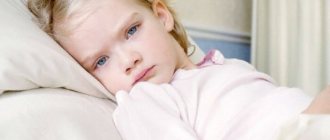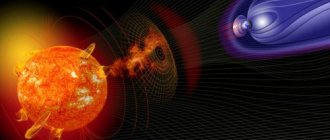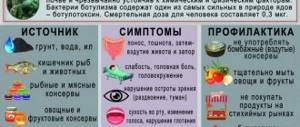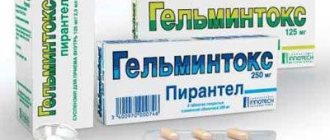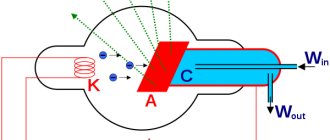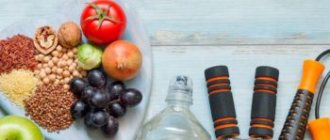Tweet
Nausea is one of the most common symptoms of upper dyspepsia. It may indicate various diseases that are not always localized in the digestive system. For example, nausea can occur due to intoxication (poisoning), heat stroke, dehydration, etc. But if a symptom occurs after eating, the cause is usually a pathology of the digestive system. Let's talk about why a person may become intolerant to fatty foods.
Causes of nausea after eating
Why do you feel sick after eating? Most often this is a sign of diseases of the digestive system, but other factors can also cause this unpleasant condition.
The reasons can be divided into two groups:
1. Nausea developing in a healthy person.
May develop due to improper eating behavior. This is facilitated by:
an abundance of fried and fatty foods;
active movements and physical activity that a person performs immediately after eating;
eating poor quality foods;
In these cases, it is enough to regulate eating behavior or stop contact with toxic substances to get rid of unpleasant symptoms.
2. Nausea that occurs due to various diseases.
If regulation of the diet does not give the expected result, and nausea remains after eating, this may be a signal of the development of the following diseases:
enteritis of the initial parts of the intestine;
These conditions require medical intervention; dealing with them on your own is not only ineffective, but also dangerous.
3. The cause of nausea after eating in a healthy woman may be pregnancy. Nausea and vomiting up to 2 times a day are a typical sign of pregnancy; if nausea or vomiting occurs more often, this may be toxicosis, requiring medical supervision.
When is medical attention required?
What to do if the measures you took on your own did not help you recover completely? Sometimes situations arise that require medical intervention:
- the child’s digestive system is disrupted after consuming fatty and fried foods;
- if symptoms after a heavy meal appear for several days;
- against the background of general malaise, bloating, seething, and diarrhea are observed, which indicates a possible infection;
- after eating fatty foods, increasing nausea and sharp pain in the abdomen occur (the so-called “acute abdomen”);
- for pain in the iliac region with severe nausea, when the victim presses his knees to his stomach, which may be a sign of cholelithiasis.
After a course of treatment for intoxication with fatty foods, restoration of liver function is required, since it takes the “main blow” upon itself. Hepatoprotectors are prescribed.
What to do if you feel nauseous after eating?
First of all, it is necessary to eliminate the factors that contribute to its occurrence, namely:
eat often, but in small portions;
avoid heavy physical activity after eating (only walking is recommended);
reduce the amount of fatty foods;
give preference to steaming, baking, boiling and stewing;
Check expiration dates carefully;
limit the use of alcohol and tobacco;
If you are a woman, be sure to take a pregnancy test, especially if your period is late.
Nausea after eating is a sign of either an error in nutrition or pathology. If discomfort occurs after eating even with a balanced diet, you should immediately consult a doctor.
— One of the causes of nausea is cholecystitis. The gallbladder is a reservoir of concentrated bile produced by liver cells. It performs many important functions: it helps digest food and absorb fats, increases the activity of pancreatic enzymes, and is also an antibacterial agent. But it happens that the gallbladder becomes inflamed and cholecystitis develops.
Its main symptoms are nausea after fatty foods (not necessarily oily. Sometimes it is enough to eat, for example, nuts), pain in the right hypochondrium, where the gallbladder is located, belching, bitterness in the mouth, and fever. The pain can be either dull or growing, and radiate to the right arm and right shoulder blade. And it happens that there is no pain in the area of the gallbladder, but there is pain in the arm and shoulder blade. In some very rare cases, symptoms are completely absent.
The reasons for the development of cholecystitis are severe physical activity, stress, and overeating. To diagnose the problem, an abdominal ultrasound and blood test will be prescribed.
enteritis of the initial parts of the intestine;
There are only two main reasons. A gastroenterologist talks about them.
Sometimes lunch or even a simple snack with something fatty begins to ask for back and an unpleasant feeling of nausea arises. Why this happens, we asked gastroenterologist Anna Yurkevich.
There are several reasons for this:
- Banal overeating. Fatty foods usually mean multi-component dishes: fatty meat, French fries with sauce, a sandwich with a thick layer of butter and cheese, cake, and so on. Often we cannot limit ourselves to one piece, hence overeating. It is difficult for the stomach and intestines to cope with large amounts of food; food leaves the stomach more slowly. A larger than usual amount of bile and pancreatic juice is needed. And, as a result, at first you feel a heaviness in the pit of your stomach, and then nausea may follow.
- Fatty foods relax the valve that is located between the esophagus and the stomach, so stomach contents are easily refluxed into the esophagus. Clinically, this manifests itself as heartburn and nausea, and this further inhibits the digestion process. Hence the unpleasant sensations.
Lifehacker reminds that if a feeling of nausea appears after any meal and this happens often, you need to consult a doctor and find out what is preventing you from eating normally.
There are several reasons for this:
Diagnostics
To understand whether there is a connection between the occurrence of diarrhea and the consumption of fatty foods, it is necessary to establish the variant of the underlying pathology. To do this, do:
- interview and examination of the patient;
- selection of laboratory and instrumental methods.
To find out the type of underlying disease, studies such as:
- Blood test (general, biochemical).
- Determination of amylase concentration in urine.
- Stool analysis (general, as well as a test to detect elastase).
- Ultrasound examination (ultrasound) and CT (computed tomography) of the abdominal organs.
- Esophagogastroduodenoscopy (examination of the lumen of the digestive tract using an optical probe).
- ELISA (enzyme-linked immunosorbent assay) to detect helminthiasis (parasitic infection).
Various specialists may be involved in examining the patient: therapist, gastroenterologist, allergist, surgeon.
Diet after gastrointestinal disorders for the purpose of their further prevention
This is an important point to maintain full recovery.
- Nausea from a fatty diet is always provoked by a change in the acidity of gastric juice. Lactic acid products taken on an empty stomach before meals will help normalize it.
- To normalize intestinal motility, it is necessary to include in the diet the consumption of foods containing fiber: cabbage, apples, carrots, radishes.
- In order to further eliminate the condition called “overeating”, you should drink light enzyme-containing preparations before meals, they will facilitate the absorption of food.
- Strictly follow your doctor's instructions and regularly check your gastrointestinal health.
- If we are talking about children, monitor the child’s diet so that he does not eat too much in the future.
If you have a lump in your throat after a hearty meal, there is nothing to worry about. In most cases, you feel sick from fatty foods when you overeat.
When this phenomenon repeats regularly, you should think about your health. Intolerance to fatty foods can signal the presence of various diseases. What to do, how to treat it, how to prevent it, can only be learned from a doctor who will make a diagnosis.
Pregnancy
Physiological causes of nausea after eating that you can cope with on your own:
- pregnancy (see the first signs of pregnancy in the early stages);
- excessive amounts of fatty, fried foods in the diet, overeating;
- consumption of low-quality food products that are past their sell-by dates;
- excessive physical activity immediately after eating (the stomach puts pressure on the diaphragm);
- predictable side effects after taking certain types of medications;
- psychogenic factors – fear, anxiety;
It may also be a malfunction of the vestibular apparatus, which is not a disease, but rather a syndrome. Nausea after eating with vestibular disorders is quite common, and nausea can also occur with orthostatic syndrome, when the body position changes dramatically. Such symptoms are accompanied by sensory changes - dizziness, nystagmus (sliding of the gaze, inability to concentrate).
The second reason is a change in blood pressure. Vascular spasm occurs, provoking various contractions of the smooth muscles of the internal organs. To equalize the pressure, the body is gradually freed from the contents of the internal hollow organs: sudden diarrhea, urination, and purging are accompanied by the urge to “pull out food.” After vomiting, I feel better.
About nausea on video
What is fat and how to deal with it
Fat is an essential nutrient, a valuable and irreplaceable source of energy and “good” cholesterol, and a catalyst for the body’s metabolic processes. The nutritional value of food is determined precisely by the presence of fats. Without them in the diet, the absorption of fat-soluble vitamins (A, D, E, K), which are vital for humans, would become impossible.
Normal absorption of fats is impossible without bile and pancreatic juice, which work together in the lumen of the duodenum, enhancing their mutual action.
Bile acids promote the breakdown (emulsification) of fats into microscopic droplets, and thanks to the secretion of the pancreas, they are fully absorbed as an organic component of food. The decomposition of fats into glycerol and fatty acids is provided by the lipase enzyme in pancreatic juice.
Simply put, bile activates lipase, triggering the mechanism of fat processing as a combined action of both enzymes. Even a slight deficiency of bile (or lipase) causes indigestion - a disruption in the functioning of this mechanism, as precise as a clock.
Nausea after eating - what is it?
This is a kind of protective reaction of the body. It occurs as a result of irritation of the digestive system.
- The sector of the brain responsible for the vomiting process receives a signal about problems in the body associated with poor-quality food or microbes.
- The salivary glands instantly activate their work, and the body prepares to cleanse the stomach.
- Vomiting clears the stomach , and the person’s well-being begins to improve.
In this case, we are talking about nausea associated with overeating or abuse of fatty, low-quality food.
Nausea is often localized slightly below the solar plexus and is accompanied by a feeling of fullness in the stomach. The patient may feel that food has accumulated in the throat and will be thrown out any minute.
Main causes of nausea after eating
Nausea and vomiting after eating are not always associated with overeating. They often talk about certain diseases.
| Causes of nausea | More symptoms | What to do? |
1. Gastrointestinal diseases. This includes:
| Discomfort begins during or after eating. The condition is accompanied by a feeling of heaviness in the epigastrium, sour belching, a feeling of heartburn, and pain in the epigastrium. Vomiting is possible , occurring in the evening a certain time after eating. | You should undergo examination by a gastroenterologist: ultrasound, gastroscopy, take a blood test, do tests for antibodies and for a certain type of bacteria. Depending on the cause of the disease, a therapeutic course of treatment and a special diet are prescribed. |
| Belching, a feeling of a lump in the throat, pain in the pit of the stomach are recorded. Discomfort appears in the evening and in the morning when you are hungry. | The condition is alleviated with special diets and therapy in order to stabilize the acid balance. |
| The disease is accompanied by swelling in the abdominal cavity, piercing, binding pain, moving to the right side under the ribs, to the spine, diarrhea, and sudden weight loss. | They do an ultrasound, tests for sugar and enzymes, and determine inflammatory foci, if any. Therapeutic therapy is carried out using enzyme preparations and antibiotics, and a special diet is prescribed. |
| With this disease, there is pain in the ribs on the right side, a metallic taste in the mouth, and flatulence. The symptom also bothers you while eating. | Diagnosed using ultrasound. Drug therapy, sometimes surgery is necessary. |
| 2. Violation of the vestibular apparatus | Accompanied by dizziness, tinnitus, vomiting, and possible nystagmus (involuntary movements of the eyes). | An otolaryngologist and a neurologist deal with the disease. Possible diseases include:
|
| 3. Pregnancy | Toxicosis during pregnancy can manifest itself in early or late stages. Discomfort occurs most often in the morning; the pregnant woman feels a particular dislike for certain odors, which can cause vomiting. If you are severely unwell, you should be treated in a hospital setting. Late toxicosis is accompanied by vomiting, swelling, and high blood pressure. This condition is proof that the nervous and urinary systems are damaged. An examination by a gynecologist is necessary, who will prescribe the necessary treatment after the examination. | Early toxicosis can be overcome by including fruits, nuts, crackers, and tea with soothing herbs in the morning diet. In the early and late stages, overexertion, stress, and physical activity should be excluded. In case of severe discomfort, consultation with a gynecologist is necessary. |
| 4.Intoxication. Intestinal infections | In case of intoxication, the cloudiness begins some time after eating. The process is resolved by vomiting. The victim feels pain in the upper abdomen, general weakness, diarrhea, and the temperature rises. In severe intoxication, spasms and fainting occur. | Drug therapy is administered depending on the disease. For example, for rotavirus, Enterofuril, Smecta, antipyretic and antiviral drugs are prescribed. Regidron is given against dehydration. If vomiting does not stop, bile is detected in the stool, signs of severe dehydration are noticeable, it is necessary to urgently call an ambulance. |
| 5.Dietary disorders | Unpleasant sensations can come from an improperly organized diet, when the breaks between meals are very long. Nausea intensifies when a person eats sweets and baked goods. Nausea can also occur during extreme diets, when the patient has sharply reduced food portions or spends fasting days without eating. | A clear diet is required. Eat food in small portions, but over a short period of time. Food should be consumed in a crushed state, and fasting days should be carried out after consultation with a nutritionist. |
| 6. Helminthiasis | Nausea is sometimes caused by helminth infection. Helminthic infestation is often disguised as gastrointestinal tract diseases or acute respiratory viral infections. The patient may have itching of the anus, anemia, and skin rashes. | You need to contact an infectious disease specialist, conduct laboratory tests, and strictly follow the doctor’s individual instructions. |
| 7. Heart attack | The patient feels nausea, possible vomiting, pain in the epigastric region, diarrhea, abdominal tension. Anemia and lack of oxygen are recorded The patient has difficulty breathing. | If the patient is in the age group of 50 years and above, smokes, or is overweight, with such symptoms it is necessary to immediately call an ambulance. The emergency doctor must do an ECG, measure blood pressure, and listen to the heartbeat to determine the presence of a heart attack. |
| 8. Acute pyelonephritis | In the case of this disease, nausea appears in both hungry and well-fed states, often ending in vomiting. The disease is expressed by a temperature of up to 40 degrees, abnormal sweating, weakness, dull pain in the lower back, and problems with urination. | The correct solution would be inpatient treatment. Specific urine and blood tests and ultrasound of the urinary organs are performed. The urologist must prescribe medication and diet. |
| 9. Excessive dosage of medications, caffeine | Almost all medications can cause side effects such as nausea. The question is the individual susceptibility of the drug. With an overdose of caffeine, reflex twitching of the limbs is observed. | If nausea occurs after taking a certain drug, you should read the instructions and consult your doctor. If necessary, replace or discard the drug. In case of caffeine overdose, first aid is provided: access to fresh air is provided, the stomach is washed, and the victim is given absorbent and enveloping agents. |
| 10. Appendicitis | An unpleasant feeling appears while eating. Pain in the initial phase is felt around the navel, then in the right iliac zone (the location of appendicitis). The pain intensifies with movement. The abdominal muscles are tense, the pulse is rapid, the temperature is elevated. | You need to call an ambulance immediately to avoid the development of peritonitis. The patient should be at rest. You should not give him analgesics or apply a warm heating pad to the problem area. |
| 11. Migraine | A migraine is accompanied by a headache on one side of the head, dizziness, numbness or tingling of the face, sensitivity to light and noise, a feeling of coldness and pale skin. | If a headache occurs, you should ensure silence and calm. In case of severe attacks, drug therapy is carried out, painkillers, triptans, ergotamines, opiates, drugs for nausea and vomiting, anticonvulsants, and antidepressants are prescribed. |
| 12. Painful menstruation | Before menstruation, pain appears in the lower abdomen, sacrum and lower back. The menstrual cycle is accompanied by cramping pain, which is accompanied by general malaise (vomiting, nausea, dizziness and headache). | It is recommended to avoid physical activity, take soothing herbal infusions, and avoid stressful situations. For severe pain, analgesics and antispasmodics, for example, No-shpa, will help. |
| 13. Hypertension | It is accompanied by severe headaches, dizziness, impaired vision and hearing, shortness of breath and nausea, increased heart rate, and chest compressions. | Medicines and preventive measures prescribed by a doctor after a complete examination of the patient will help lower blood pressure. For diagnostic purposes, an ECG, ultrasound of the kidneys and renal arteries are performed, and a laboratory examination of urine and blood is prescribed. |
| 14. Glaucoma | Narrowing of the viewing angle, dizziness and headaches, eye pain, nausea and vomiting, hemorrhage in the eye, photophobia. | You should consult an ophthalmologist for advice. |
| 15. Concussion | During a head injury, a person loses consciousness . Later, the patient complains of headache, pain, dizziness, nausea and vomiting. Tinnitus appears | The main treatment for the disease is healthy sleep and rest. For severe headaches, vomiting, etc., the doctor prescribes appropriate treatment. |
There are a number of other diseases whose symptoms are associated with the appearance of nausea after eating.
How to avoid nausea after eating: prevention
Prevention of the development of nausea should be aimed at eliminating the causes of its occurrence. The rules of a healthy lifestyle often help to avoid this unpleasant phenomenon.
- eat small meals every 4 hours;
- drink enough fluid for the normal functioning of the stomach and intestines;
- drink unsweetened drinks, give preference to pure or mineral water without gas. Green tea and compotes are useful;
- After lunch, walk a little, take a walk in the fresh air. Provide the body with regular exercise to help stabilize metabolism;
- give up irritating foods (spices, flavorings, fried foods);
- reduce the consumption of flour products;
- to refuse from bad habits;
- if the cause of discomfort is the vestibular system, do not eat before moving on vehicles;
- Before taking the drug, carefully read the instructions; a side effect may be nausea;
- during pregnancy, minimize stress factors, fatigue, and physical activity;
- be careful in your movements to avoid bruises and injuries;
- if you have an allergic reaction to certain products or external irritants, avoid them if possible;
- Maintain personal hygiene, regularly ventilate your living space and workplace;
- be sure to watch your weight and don’t overeat.
Nausea and vomiting after eating are not always associated with overeating. They often talk about certain diseases.
How to quickly eliminate unpleasant discomfort
So, a man ate an appetizing-smelling fatty steak, flavored with all kinds of seasonings, and after a while he suddenly felt unwell. Help is needed. Ideally, the best option would be to consult a doctor immediately. But what to do if trouble strikes you in the forest or at your summer cottage, and the nearest medical center is hundreds of kilometers away?
- Each person should know the state of his health at a basic level: which foods he tolerates well and which ones are not as great as he would like, and try to limit himself in consuming foods that are problematic for him.
- If the above does not happen and the glutton has eaten too much fat, the home medicine cabinet must contain enzyme preparations (even for preventive purposes): Festal, Panzinorm, Almagel, Phosphalugel, Creon and their other analogues. It is necessary to understand that these medications must be taken with caution, as they have a detrimental effect on the functioning of the pancreas and, if used excessively, can seriously aggravate the situation.
- After taking the medications, you should lie down in a comfortable position and relax as much as possible. Clothing should not restrict the epigastric and intestinal areas - belts and fasteners must be unfastened.
- Provide an influx of fresh, cool air, as the process of digesting fatty foods slightly increases body temperature.
- After a fatty meal, it would not be a bad idea to drink hot tea or another herbal drink with a choleretic effect. These are various herbal infusions, yarrow infusion, corn silk, knotweed decoctions, coltsfoot and others. The drink should be hot or tolerably warm, but not cold or carbonated. Cold drinks slow down the metabolic reaction of gastric juice and provoke the cooling of fat, which leads to hardening of the food bolus and does not have the best effect on the digestive function of the stomach. Carbonated drinks cause the formation of gas bubbles, which increase the volume of the food bolus and stretch the walls of the stomach, increasing the discomfort.
- Sometimes induced vomiting helps eliminate the consequences of overeating. Excess food being removed frees up a certain volume of the stomach and makes its work easier.
Conclusion
You can’t judge by just the appearance of nausea in the morning. But, if the problem arises day after day, then treatment should be started immediately.
The reasons can be very different and only a specialist can determine them for sure.
Everyone felt an unpleasant feeling in the upper part of the stomach and lack of air, with the urge to vomit the contents of the stomach. In ordinary cases, nausea can be explained by motion sickness or indigestion. If the nausea is not mild, but periodic and severe, then this indicates a serious illness that requires immediate treatment.
Why do you feel dizzy and sick in the morning?
These signs may indicate a serious pathology. When dizziness and nausea occur after each meal, there is a possibility of a disease called dumping syndrome. Its appearance may be affected by gastric resection.
When food arrives, blood flows to the organs involved in digestion.
When heavy food enters the stomach, additional blood pressure is applied to the small intestine. This phenomenon causes dizziness along with nausea.
The disease appears when the stomach is unable to digest the food received. In addition to dizziness, other symptoms occur:
- Low pressure.
- Vomit.
- Paleness of the skin.
- Hard breath.
- Cold rash of sweat.
- Abnormal heartbeat.
In medicine, dumping syndrome is usually divided into 2 stages:
- Early. The appearance of the first symptoms begins half an hour after eating. The food began to be digested too early and the process is not complete. This time is not enough for complete absorption of substances, so food enters the intestines in a poorly digested form. At the same time, the quantity of food and its quality do not affect the condition in any way. Even an ordinary pie or candy can cause discomfort and symptoms.
- Late. It differs primarily from the previous stage by the time of its occurrence. Usually signs begin to appear after 2-3 hours.
Treatment of dumping syndrome:
- After eating food you need to rest.
- The doctor must prescribe a special diet.
- To get rid of unpleasant symptoms, they take medications: Immodium, Motilium and other analogues.
- At an advanced stage, you will have to take novocaine before meals.
- In severe cases, a blood transfusion will be required.
Preventive actions
In case of regular problems, get examined by a gastroenterologist. Perhaps it's not the fatty foods at all.
Changing your diet will help you avoid the clinical picture of intoxication. Fatty foods make you sick when a person eats fried and high-calorie foods without limiting himself in any way. Spices, canned food, smoked foods, alcohol, and synthetic drinks with gas have a bad effect on digestion.
If you instill healthy habits in food and lifestyle in general, you won’t have to experience all the “horrors” of poisoning with fatty foods. Advice, of course, is in the category of “don’t teach me how to live,” but they haven’t come up with a better one yet:
- get rid of excess weight with the help of a diet;
- replenish your water balance by drinking up to 2 liters of liquid daily;
- reduce portion sizes and use fractional meals: eat little, but more often (5-6 times a day);
- move more and lead a physically active lifestyle;
- get rid of habits that have a bad effect on your overall well-being (smoking and drinking).
What to do if you feel sick after eating
Fresh air, sleep and mineral water without gas help, and in some cases you can’t do without pills. You need to perceive the feeling of nausea after eating as a signal from the body for help, and not ignore it. You can eliminate the feeling of nausea only if you correctly determine the cause of this condition:
- Diseases. Contact a gastroenterologist and follow his instructions and diet.
- Fatty food. Try not to overeat, exclude high-calorie, fried and fatty foods. If you eat too much, drink a glass of warm water.
- Medications. Nausea while taking medications is a side effect that disappears after treatment ends.
- Pregnancy. Ginger root and green tea will help normalize the condition before visiting an obstetrician-gynecologist.
- Because of stress. If you cannot exclude the source of stress, then you should think about the good and take a mild sedative. It is better to choose herbal preparations that will not harm the body, for example, valerian.
- Kinetosis. When a person’s body remains motionless, and everything around moves, the vestibular apparatus goes crazy. Vehicles, air travel, trains - everything can trigger an attack of kinetosis. You just need to endure the unpleasant moment, but the effect can be temporarily weakened with the help of anti-sickness pills or mints.
- Sunstroke in summer. You need to lie down and put a wet towel on your face.
If patients come to the doctor complaining that they feel sick after eating, then the doctor needs to suspect involvement of the upper digestive tract. When this symptom is isolated, goes away on its own and does not cause complications, then no special treatment is required. However, when the feeling of nausea begins to bother you constantly, in this case it is necessary to conduct a series of diagnostic examinations.
Treatment of allergies to specific foods
Currently, there is no specific treatment for food intolerance , and the only way to live with this disease is to follow a diet that eliminates the component that causes irritation to the intestinal lining.
Food diet
Treatment of food intolerance consists, first of all, in eliminating from the diet foods or categories of foods to which the body reacts negatively. It is possible that after a sufficiently long period of removing the allergenic product, all symptoms of intolerance will disappear.
Here we should mention one scientifically unsubstantiated theory, which says that every person should eat in accordance with their blood type. Based on this assumption, for example, people who have blood type 1, being descendants of the most ancient prehistoric hunters, should eat mainly meat and animal protein, avoiding dairy products, legumes and grains. Carriers of blood type 2, being descendants of the first farmers, must follow a diet rich in cereals, vegetables and fruits.
Symptoms
In most cases, the feeling of nausea is accompanied by a number of additional symptoms. As a rule, these include general weakness, increased salivation, dizziness and pale skin. Vomiting is of particular importance in terms of diagnosis. Nausea can be caused by various diseases in which the digestive tract is not always involved. An example is migraine. With this pathology, severe unilateral pain occurs in the head area. It is not uncommon for patients to experience nausea and vomiting during the development of such attacks. If the cause of the disease is related to the functioning of the digestive tract, then vomiting, as a rule, brings relief, but if not, then the problems are related to the nervous system.
The nature of vomiting can suggest the presence of one or another pathology. If the vomit resembles coffee grounds, this indicates bleeding from the upper digestive tract. This condition is caused by gastric ulcer, bleeding from esophageal varices and Mallory-Weiss syndrome. Yellow vomit indicates gastroduodenal reflux.
It is also necessary to mention a condition such as pyloric stenosis. With this pathology, the outlet of the stomach narrows, and food cannot pass further into the underlying parts of the digestive tract. Pyloric stenosis is accompanied by nausea and vomiting, which brings relief. In the initial stages of the disease, the state of health of such patients is generally satisfactory. Over time, with decompensation of the general condition, the lumen is completely blocked, food is not digested, and the stomach increases in size. The general appearance of such patients is emaciated, and there is a violation of water and electrolyte balance. The vomit has an unpleasant odor and contains food debris.
First of all, you need to contact an endocrinologist. He will definitely prescribe hormone tests that will confirm or refute the diagnosis.
Let's work together to make the unique material even better, and after reading it, we ask you to repost it on a social network convenient for you. net.
Digestive difficulties encountered in children
In children of different ages, digestive difficulties are characteristic of a certain stage in the formation of the digestive tract. For digestive disorders to occur in an early infant, it is enough for his mother to eat a handful of red cherries and then feed the baby with her breast milk. The formation of enzymes in this case is at the very initial level and the berry protein becomes foreign even in combination with mother's milk.
A six-month-old baby's enzymes are more stable, but a number of foods in their pure form are still contraindicated at this stage.
Further, with each year of growing up, the child’s nutritional needs gradually increase. However, it is important to take a rational and reasonable approach to compiling a children's diet, because some foods tolerated by a teenager's body can be lethal for a four-year-old preschooler. This includes some varieties of nuts, legumes, excessive consumption of chocolate and citrus fruits, mushrooms, lard and many others. You should not force feed your baby - children are not always able to correctly explain the state of digestive discomfort that they may feel. Each child subconsciously determines the amount of food he needs.



